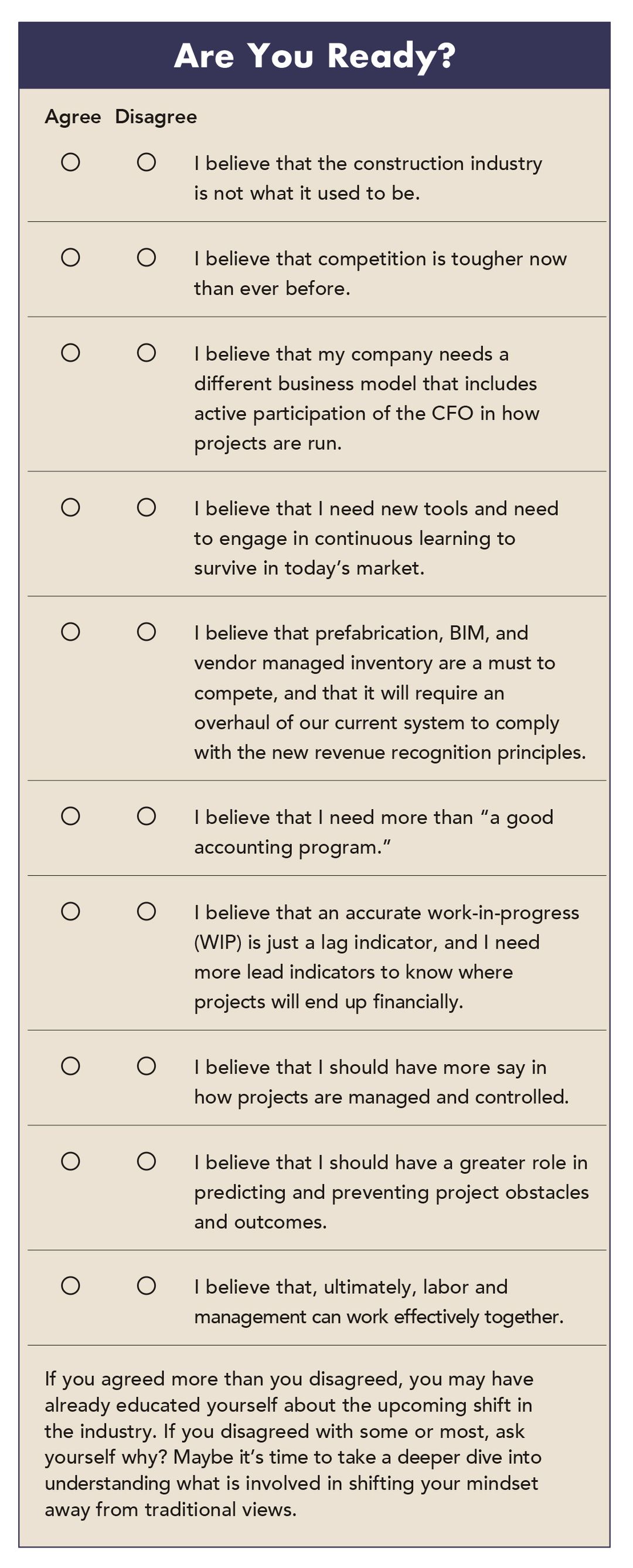Like other industries that have gone through an industrial transition, it will be up to construction financial professionals to take the leadership role as the industry changes. This article will serve as a starting point for CFOs and other financial managers so they can see the coming trends and possible next phases of the industry – which could be parallel to what other industries have experienced – and can help companies prepare by learning from the history of industrialization. It will discuss what could change, why, and how companies can adapt for a competitive advantage.
Competing in the New Construction Environment
In times of change, CFOs have the best seat in the house with access to and responsibility for leading and lagging indicators. Currently, the construction industry’s economy is in the middle of a boom and there is optimism about how long it will last. Simultaneously, construction growth continues to be stifled with expensive production costs. For example, the cost of labor per every dollar sold in construction is 38 cents, whereas other industrialized industries are below 15 cents per dollar sold.1
As the traditional way of operations in construction is expected to transition to more industrial and professional operations for providing shelter and infrastructure, it will require a different set of rules and regulations, which will demand a different role for CFOs.
In the era of new industrialization, the construction industry will no longer be content with the know-how of the skilled tradesmen, but they will also be looking for the know-why of resource management. The missing element of this transition is the content, which only exists with the tradesmen. Transferring the tacit knowledge from skilled tradesmen to an explicit knowledge environment requires careful application of the principles of scientific management that were developed in the early 20th century.
The key element of industrialization is the way in which human resources are, and will be, used. The entire project delivery process – from design to construction to operating and maintenance – will be impacted. Similar to industrialization in other industries, the entire process will improve with better time, cost, quality, and safety. The “construction phase” of a built environment is the shortest, yet it can be the most costly due to the decisions and missing feedback from the skilled trades.
